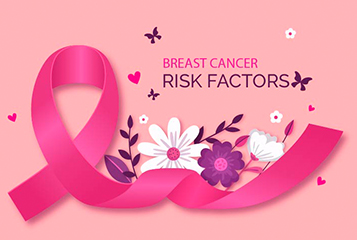
Most breast cancers are sporadic and develop if a person’s genes are damaged by chance after they are born. Environmental factors are the underlying cause of this type of cancer. So there is no chance of the person passing this gene to their children.
Inherited breast cancer is the less common type and makes up 5% to 10% of the cancers. It occurs when gene changes (mutations) are transferred from parent to child. Many of those mutations are in BRCA1, BRCA2, and PALB2 (tumor suppressor genes), which prevent the cells from growing out of control and turning into cancer. If these cells have a mutation they can grow .
Some people showing a high risk of breast cancer may not develop it, while at the same time, people who do not show any risk factors can develop it. So understanding the risk factors that you cannot change and can be change is necessary to reduce your risk of developing breast cancer
Risk factors that you can change
|
Risk factors that you cannot change
|
Women should self-examine their breasts regularly and also perform mammogram screening starting at the age of 40. This will help in early detection of cancer and increase the chance of survival as there are more treatment options available in the early stage. So, consider the risk factors you can change. Exercising regularly, maintaining a proper diet, and reducing stress and anxiety could help lower risk of breast cancer.
